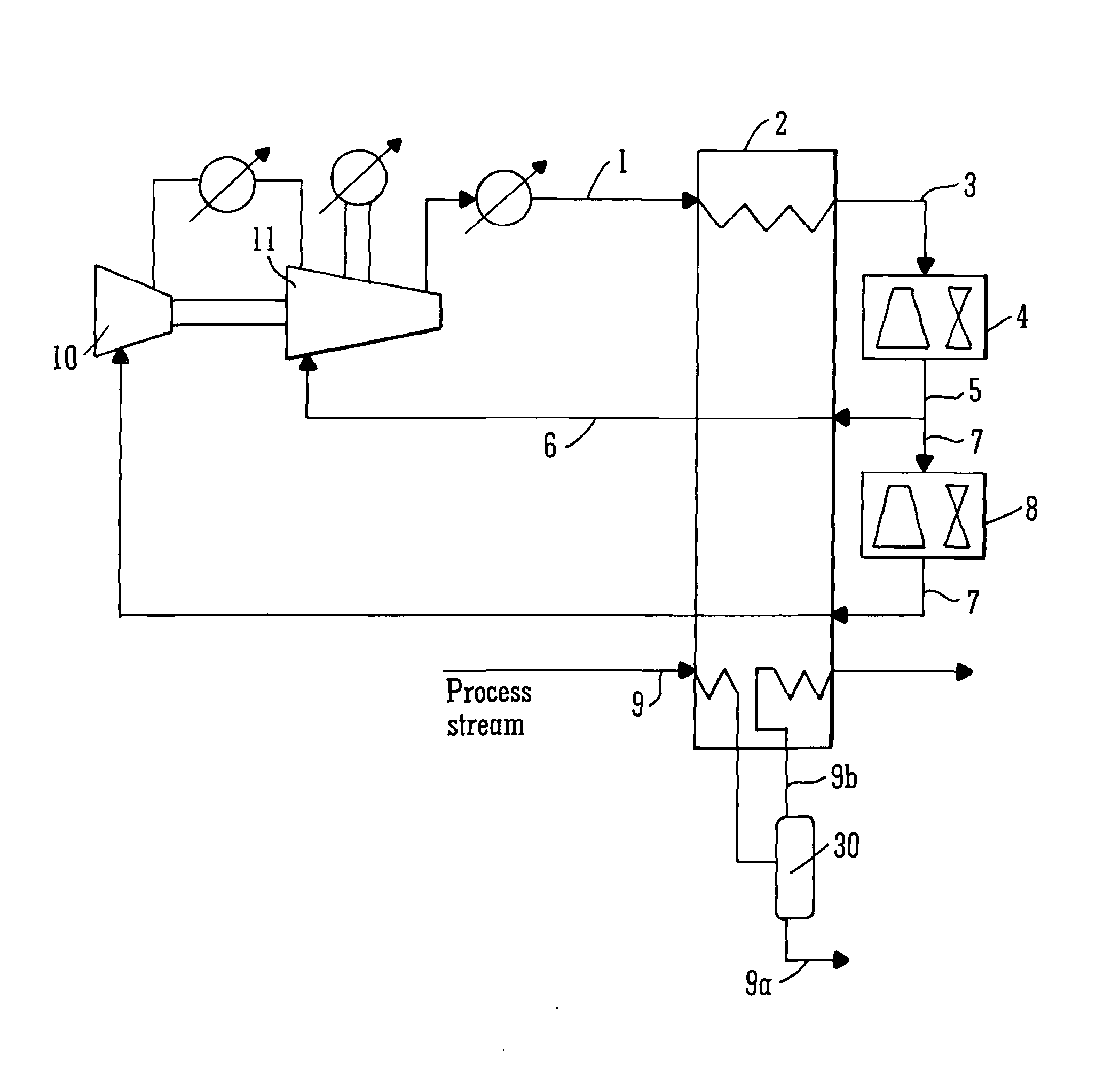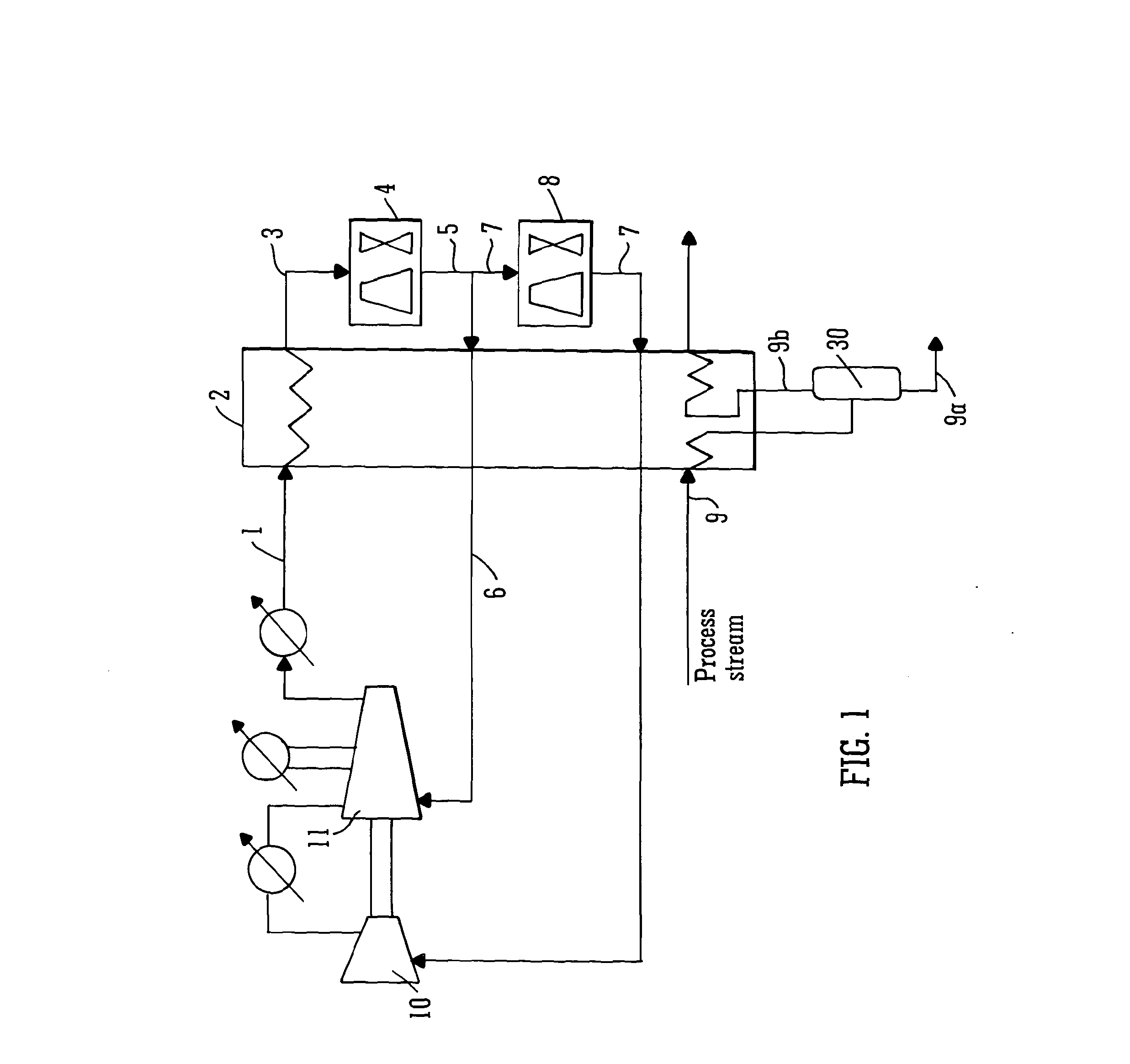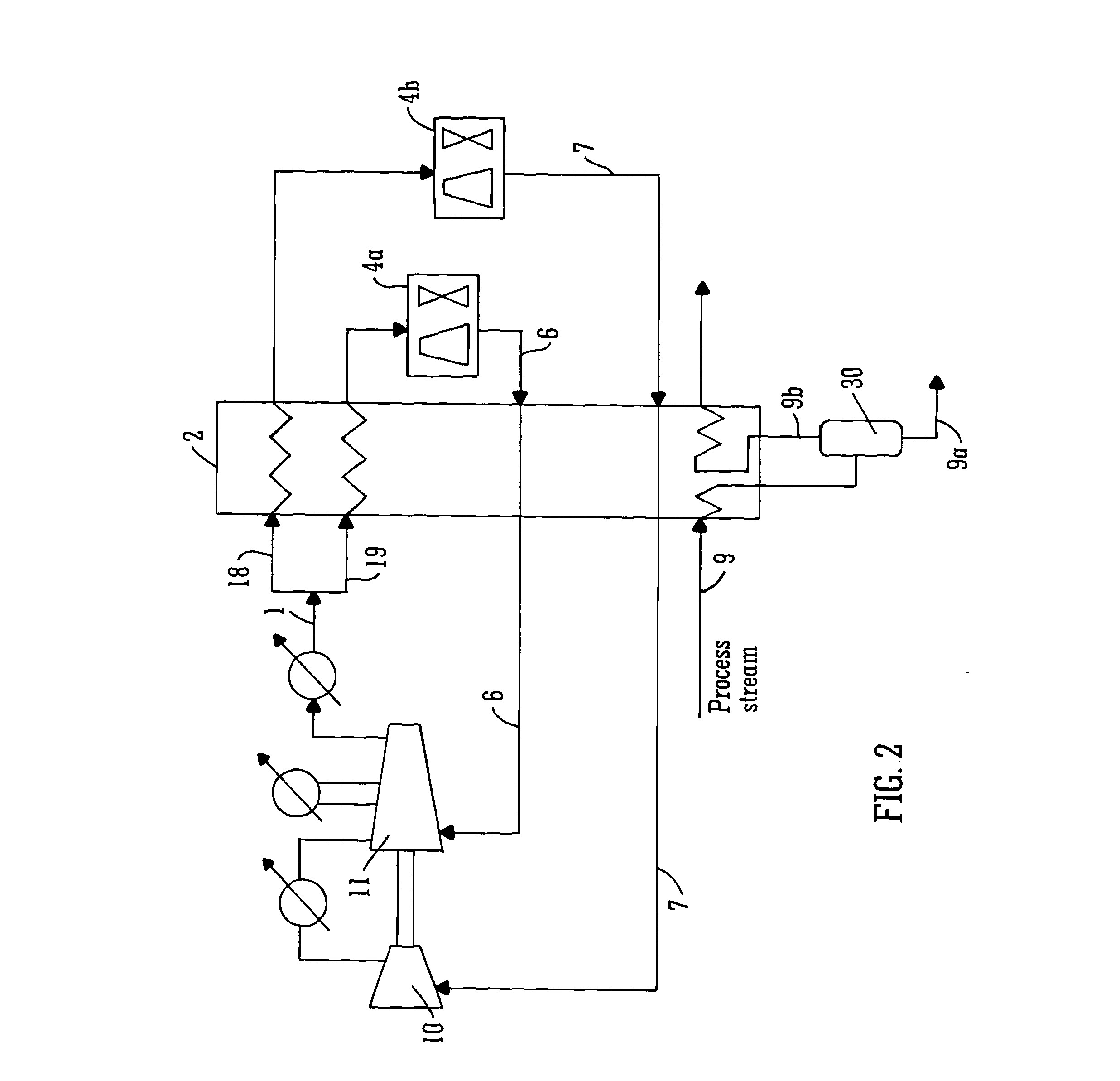Refrigeration process
a refrigeration process and refrigeration technology, applied in refrigeration, lighting and heating equipment, solidification, etc., can solve the problems of not being able to build pipelines in certain environments, not being able to meet the requirements of certain environments, so as to achieve the effect of optimizing the thermodynamic efficiency and improving the efficiency of the compression process
- Summary
- Abstract
- Description
- Claims
- Application Information
AI Technical Summary
Benefits of technology
Problems solved by technology
Method used
Image
Examples
example
Process Modelling and Optimisation
[0160]For each embodiment described above in reference to FIGS. 1 to 4, the independent variables in the process are identified first, and then physical property calculations, mass balance and energy balances are implemented to compute other intermediate operating conditions and evaluate the overall performance of the refrigeration process. The physical property calculation is based on Equation of State (for example, Peng-Robinson method) which provides thermodynamic information between stream conditions (composition, temperature, pressure) and physical properties (enthalpy, entropy). In principle, once the composition is given, the physical state of a stream is determined by any two of the following parameters: temperature, pressure, specific enthalpy and specific entropy. This feature is utilised to calculate stream enthalpy change in the heat exchanger, and to determine the stream conditions after expansion and compression. If stream mixing or sp...
case study 1
[0170]A pre-treated natural gas stream is to be cooled from 19.85° C. to −58.15° C. using a mixture of hydrocarbons C2H6, C3H8, and n-C4H10 as the refrigerant components. The objective is to minimise the compression power consumption. External cold utility is available to cool hot refrigerant to 40° C. The minimum temperature difference for feasible heat transfer is 2.5° C. Compressor isentropic efficiency is assumed to be 80%. To be consistent with previous work by Vaidyaraman et al. (2002), physical property calculations are conducted with SRK (Soave-Redlich-Kwong) equation of state. The temperature-enthalpy profile of the natural gas stream is given in Table 1.
TABLE 1Temperature-enthalpy profile of the natural gas stream.Temperature (° C.)Enthalpy (kW)19.853969.83811.523608.9433.263248.05−4.922887.157−12.972526.262−20.862165.368−28.551804.474−35.981443.579−41.451167.567−42.781082.685−48.27721.791−53.42360.896−58.150
[0171]A conventional single mixed cycle and all the novel refrige...
case study 2
[0182]In this study, existing processes as well as the four embodiments of the present invention, were optimised for LNG production. A pre-treated natural gas stream is to be cooled from ambient temperature 25° C. to −163° C. A mixture of hydrocarbons CH4, C2H6, C3H8, n-C4H10 and N2 is employed as the mixed refrigerant. The objective was to minimise the compression power consumption based on multi-stage compression. External cold utility is available to cool hot refrigerant down to 30° C. The minimum temperature difference for heat transfer is 5° C. Compressor isentropic efficiency is assumed to be 80%. The physical property calculations are performed based on Peng-Robinson equation of state. The temperature-enthalpy profile of the natural gas stream is given in Table 4.
TABLE 4Temperature-enthalpy profile of the natural gas stream.Temperature (° C.)Enthalpy (kW)2520178.8−6.0318317−34.0916352.8−57.6514468−70.111978−74.5510198−82.267114−96.55690−1153840−1630
[0183]In order to have a be...
PUM
 Login to View More
Login to View More Abstract
Description
Claims
Application Information
 Login to View More
Login to View More - R&D
- Intellectual Property
- Life Sciences
- Materials
- Tech Scout
- Unparalleled Data Quality
- Higher Quality Content
- 60% Fewer Hallucinations
Browse by: Latest US Patents, China's latest patents, Technical Efficacy Thesaurus, Application Domain, Technology Topic, Popular Technical Reports.
© 2025 PatSnap. All rights reserved.Legal|Privacy policy|Modern Slavery Act Transparency Statement|Sitemap|About US| Contact US: help@patsnap.com



